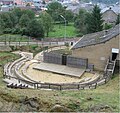
Junglinster is a commune in central Luxembourg, which draws its name from its principal town, Junglinster. It is one of six communes in the Luxembourg canton of Grevenmacher. The 18th-century St Martin's church is a national monument.
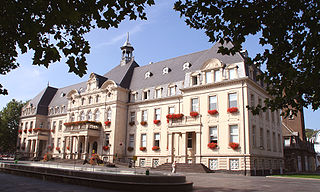
Dudelange is a commune with town status in southern Luxembourg. It is the fourth-most populous commune, with 22,043 inhabitants. Dudelange is situated close to the border with France.

Clemency is a town and a former commune in south-western Luxembourg. Since 2012, it is part of the commune of Käerjeng. It is part of the canton of Capellen, which is part of the district of Luxembourg.

Remich is a commune with town status in south-eastern Luxembourg with a population of 3,645 inhabitants as of 2018. It is situated in the canton of the same name. Remich lies on the left bank of the river Moselle, which forms part of the border between Luxembourg and Germany. The commune is the smallest in Luxembourg by surface area.

Ettelbruck is a commune with town status in central Luxembourg, with a population of 9,965 inhabitants.

Kopstal is a commune and a small town in central Luxembourg. The towns of Kopstal and Bridel belong to this commune. Kopstal is a small town, with a population of 1,045 as of 2023, located in a valley between forested hills situated beneath Bridel.

Remich is a canton in the south-east of Luxembourg. It borders Germany & France.

Leudelange is a commune and town in south-western Luxembourg. It is situated in the canton of Esch-sur-Alzette.

Grevenmacher is a commune with town status in eastern Luxembourg, near the border with Germany. It gives its name to the canton of Grevenmacher, and, until its abolition in 2015, the district of Grevenmacher. The town is situated on the left bank of the river Moselle, in a wine growing region.

Clervaux is a commune and town in northern Luxembourg, situated in the canton of the same name.
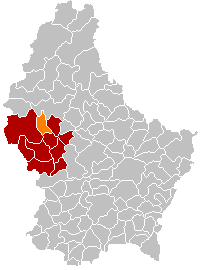
Wahl is a former commune and small village in western Luxembourg, in the canton of Redange.

Préizerdaul is a commune in western Luxembourg, in the canton of Redange. Until 17 July 2001, it was known as Bettborn, after its administrative centre. Préizerdaul was the first commune to change its name since before the First World War; to date, it is the only commune to have changed its name to a name of Luxembourgish origin.

Boulaide is a commune and small town in north-western Luxembourg. It is part of the canton of Wiltz, which is part of the district of Diekirch. As of 2023, it has a total population of 1,499.
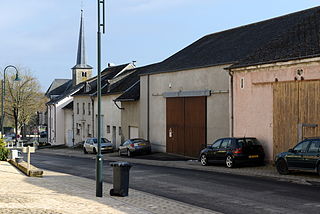
Waldbredimus is a small town and former commune in south-eastern Luxembourg. It is part of the canton of Remich, which is part of the district of Grevenmacher. The commune's administrative centre was Trintange.

Frisange is a commune and town in southern Luxembourg. It is part of the canton of Esch-sur-Alzette.

Reckange-sur-Mess is a commune and small town in south-western Luxembourg. It is part of the canton of Esch-sur-Alzette.

Contern is a commune and town in southern Luxembourg. It is located east of Luxembourg City. As of 2024 the commune has a population of 4,513 whereas the town itself, which lies in the south-west of the commune, has a population of 1,876.

Walferdange is a commune and small town in central Luxembourg.
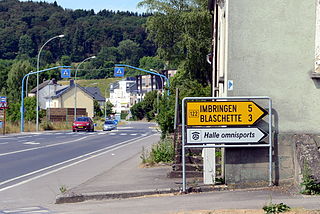
Lorentzweiler is a commune and small town in central Luxembourg, in the canton of Mersch. It is situated on the river Alzette.

Dalheim Ricciacum is the site of a Gallo-Roman vicus at Dalheim in south eastern Grand Duchy of Luxembourg. Founded during the reign of the Emperor Augustus, the site was at a strategic point on the Via Agrippa, the main Roman road from the Mediterranean to the Rhine. The well-preserved theatre dating from the 2nd century AD could accommodate 3,500 people.




